A fine Mughal gem-set enamelled steel push dagger (katar)
India, 17th Centurythe double-edged steel blade chiselled with central spine flanked by triangular recesses, the forte decorated in gold overlay to both sides with foliate designs, the hilt with sidebars and grips set with rubies and diamonds in gold kundan with floral motifs and foliate vines on a ground of green enamel
44.8 cm. longFootnotesProvenance
Sotheby's, Arts of the Islamic World & India including Fine Rugs and Carpets, 30 March 2022, lot 125.
For a similar katar with gem-set and enamelled decoration on green ground see Sotheby's New York, Indian & Southeast Asian Works of Art, 24 March 2011, lot 103.
Gem-set katars like the present lot were visual indicators of high status in the Mughal court, and this is reflected in the frequent representation of luxurious gold-mounted and gem-set katars tucked into sashes in the portraits of Mughal emperors and courtiers. The presence of katar daggers in Mughal paintings increased during the reign of Emperor Akbar (reg. 1556-1605). An early Tuti-nameh manuscript commissioned by Akbar between 1560 and 1565 features ten katars, all towards the end of the manuscript, which could suggest that the prominence of the katar in the visual language of the court increased during this production period. By the time the manuscript of the Hamza-nameh was being produced in 1562-1577, the katar was appearing frequently throughout Mughal court paintings. In portraits of Akbar as an adult, he is generally depicted with a gold and gem-set katar (for an example, see Sotheby's, Arts of the Islamic World, 25 April 2012, lot 482). Such katars continue to be present in many portraits of subsequent Mughal emperors (Salam Kaoukji, Precious Indian Weapons and Other Princely Accoutrements, London: Thames & Hudson, 2017, p. 25).
A Mughal album folio depicting the court of Shah Jahan sold at Bonhams, Islamic and Indian Art, 25 October 2007 (lot 334), features different types of katars mounted with precious materials. In this painting, a courtier and an attendant wear katars set with gold and gems on darkened ground, with a similar decorative scheme to the present lot, though it is unclear whether these are meant to be enamelled daggers.
A fine Mughal gem-set enamelled steel push dagger (katar)
India, 17th Centurythe double-edged steel blade chiselled with central spine flanked by triangular recesses, the forte decorated in gold overlay to both sides with foliate designs, the hilt with sidebars and grips set with rubies and diamonds in gold kundan with floral motifs and foliate vines on a ground of green enamel
44.8 cm. longFootnotesProvenance
Sotheby's, Arts of the Islamic World & India including Fine Rugs and Carpets, 30 March 2022, lot 125.
For a similar katar with gem-set and enamelled decoration on green ground see Sotheby's New York, Indian & Southeast Asian Works of Art, 24 March 2011, lot 103.
Gem-set katars like the present lot were visual indicators of high status in the Mughal court, and this is reflected in the frequent representation of luxurious gold-mounted and gem-set katars tucked into sashes in the portraits of Mughal emperors and courtiers. The presence of katar daggers in Mughal paintings increased during the reign of Emperor Akbar (reg. 1556-1605). An early Tuti-nameh manuscript commissioned by Akbar between 1560 and 1565 features ten katars, all towards the end of the manuscript, which could suggest that the prominence of the katar in the visual language of the court increased during this production period. By the time the manuscript of the Hamza-nameh was being produced in 1562-1577, the katar was appearing frequently throughout Mughal court paintings. In portraits of Akbar as an adult, he is generally depicted with a gold and gem-set katar (for an example, see Sotheby's, Arts of the Islamic World, 25 April 2012, lot 482). Such katars continue to be present in many portraits of subsequent Mughal emperors (Salam Kaoukji, Precious Indian Weapons and Other Princely Accoutrements, London: Thames & Hudson, 2017, p. 25).
A Mughal album folio depicting the court of Shah Jahan sold at Bonhams, Islamic and Indian Art, 25 October 2007 (lot 334), features different types of katars mounted with precious materials. In this painting, a courtier and an attendant wear katars set with gold and gems on darkened ground, with a similar decorative scheme to the present lot, though it is unclear whether these are meant to be enamelled daggers.
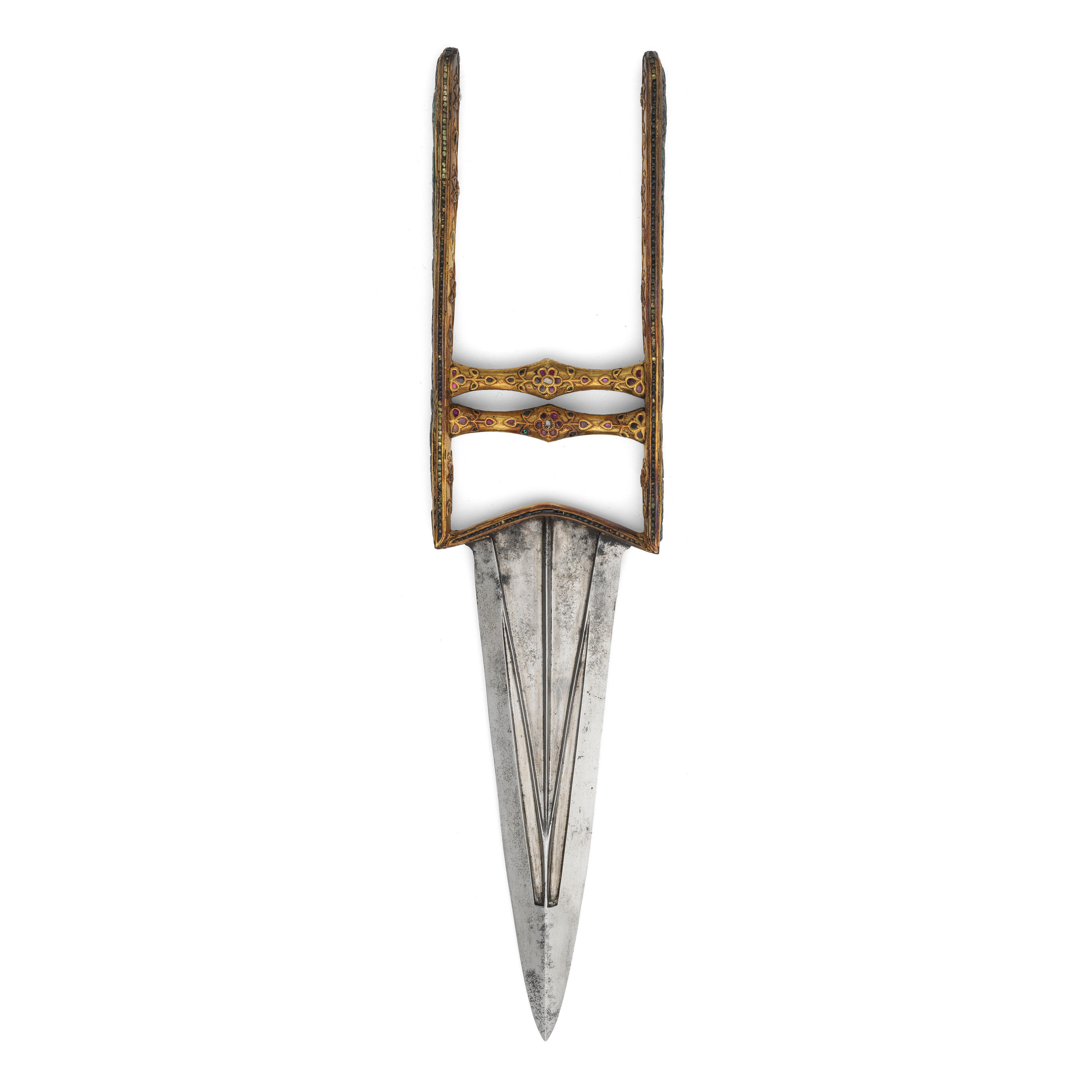

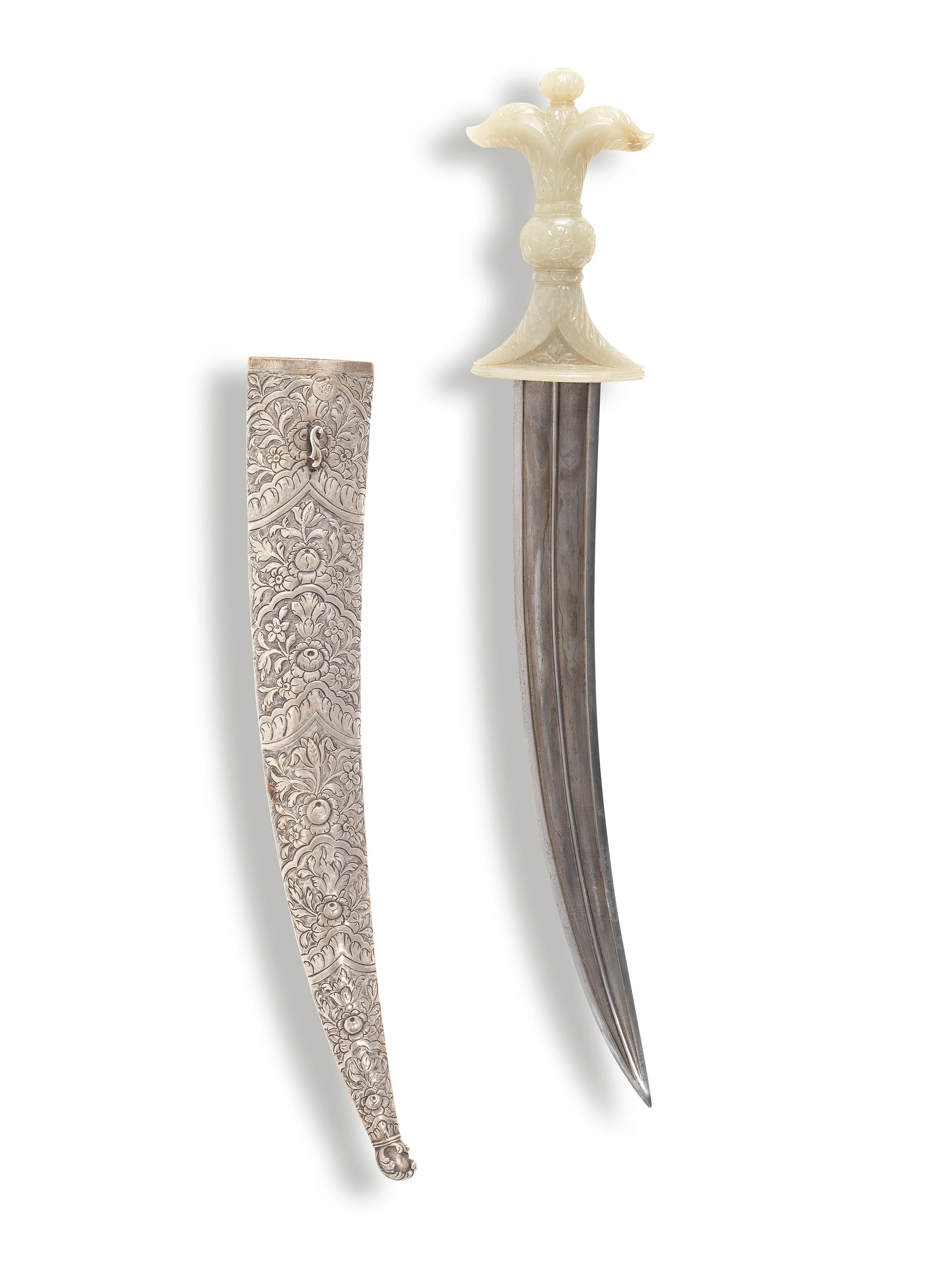
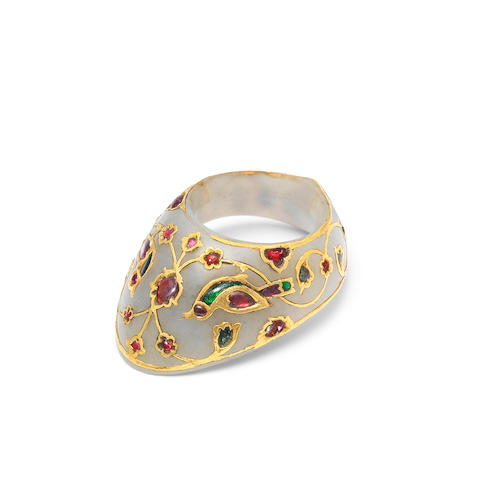
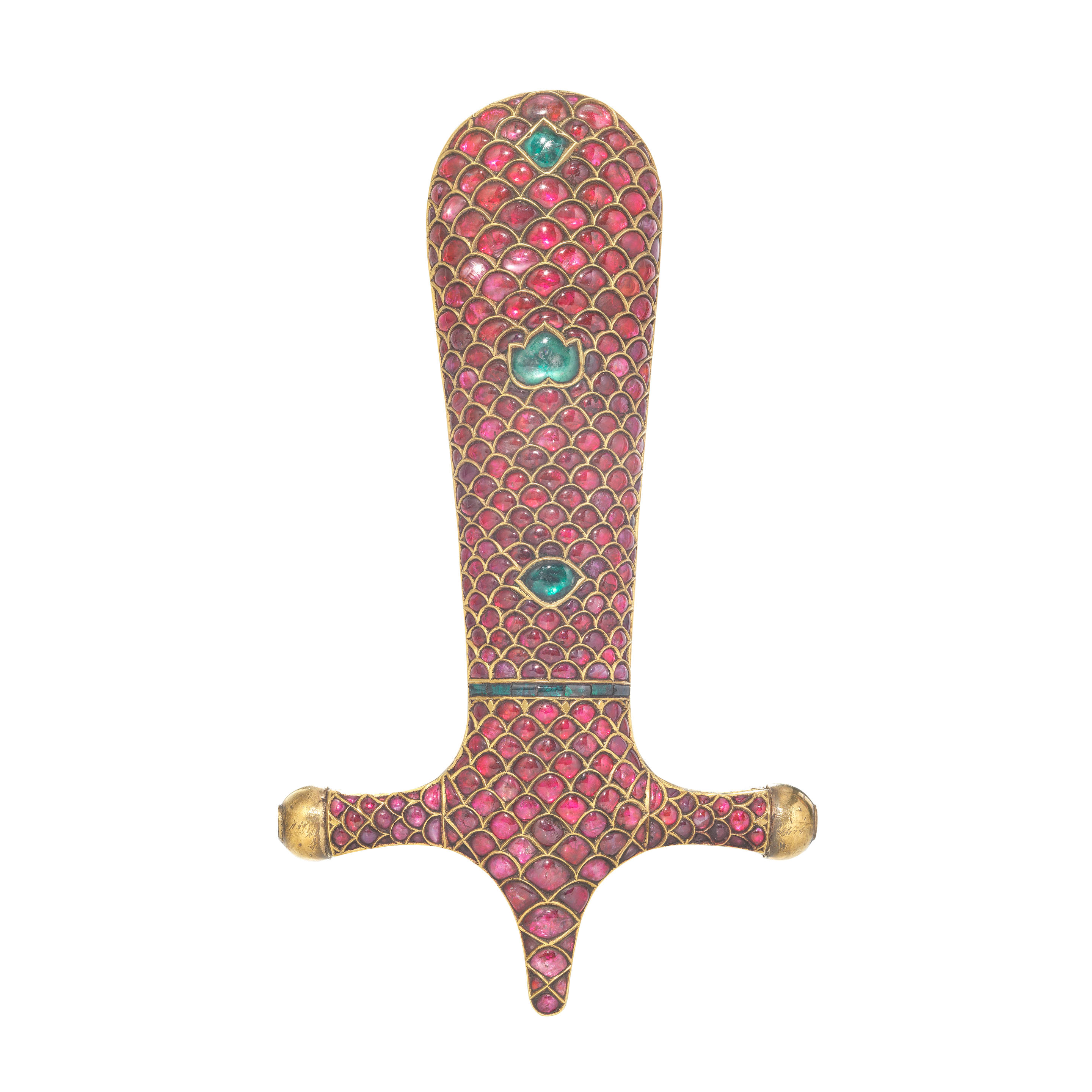
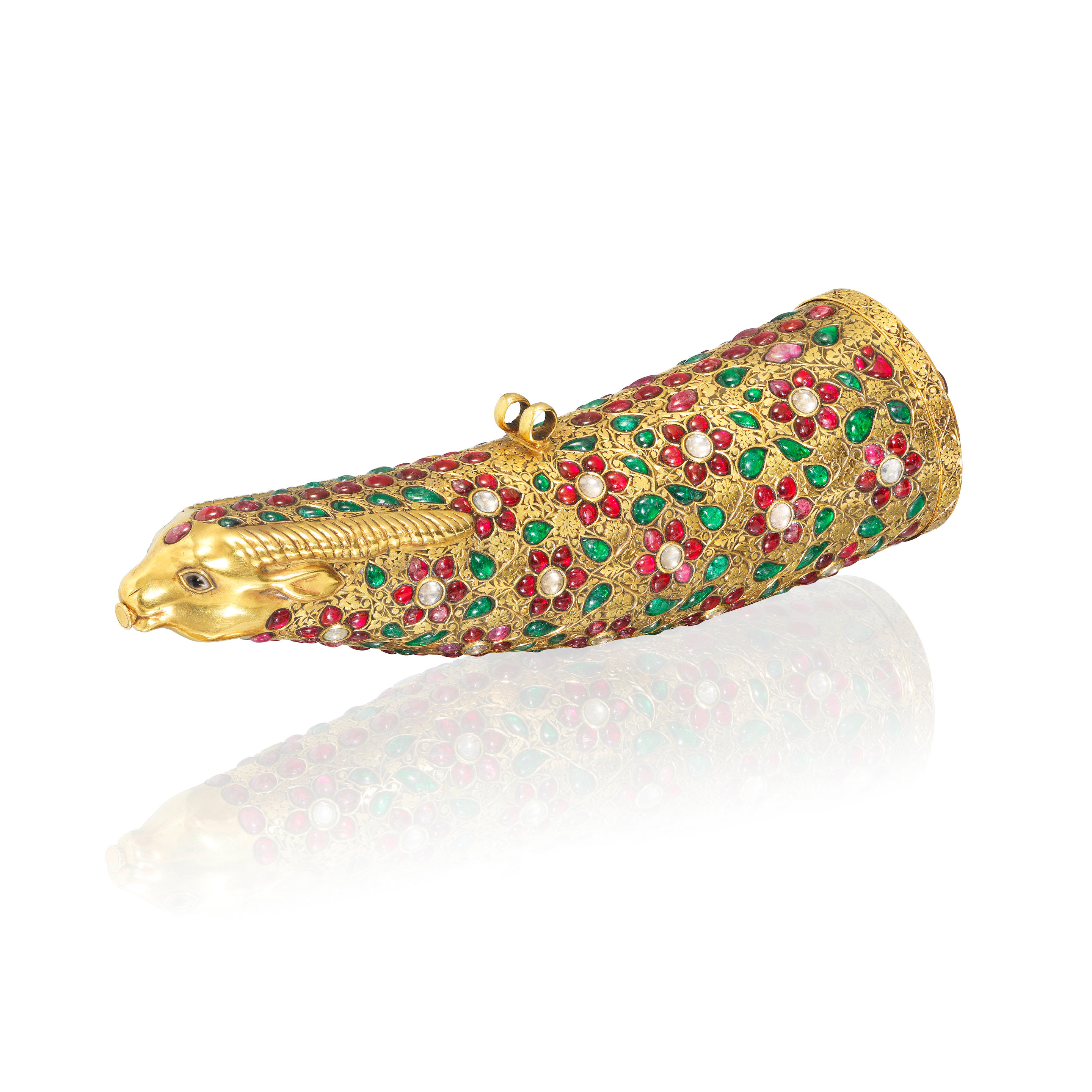
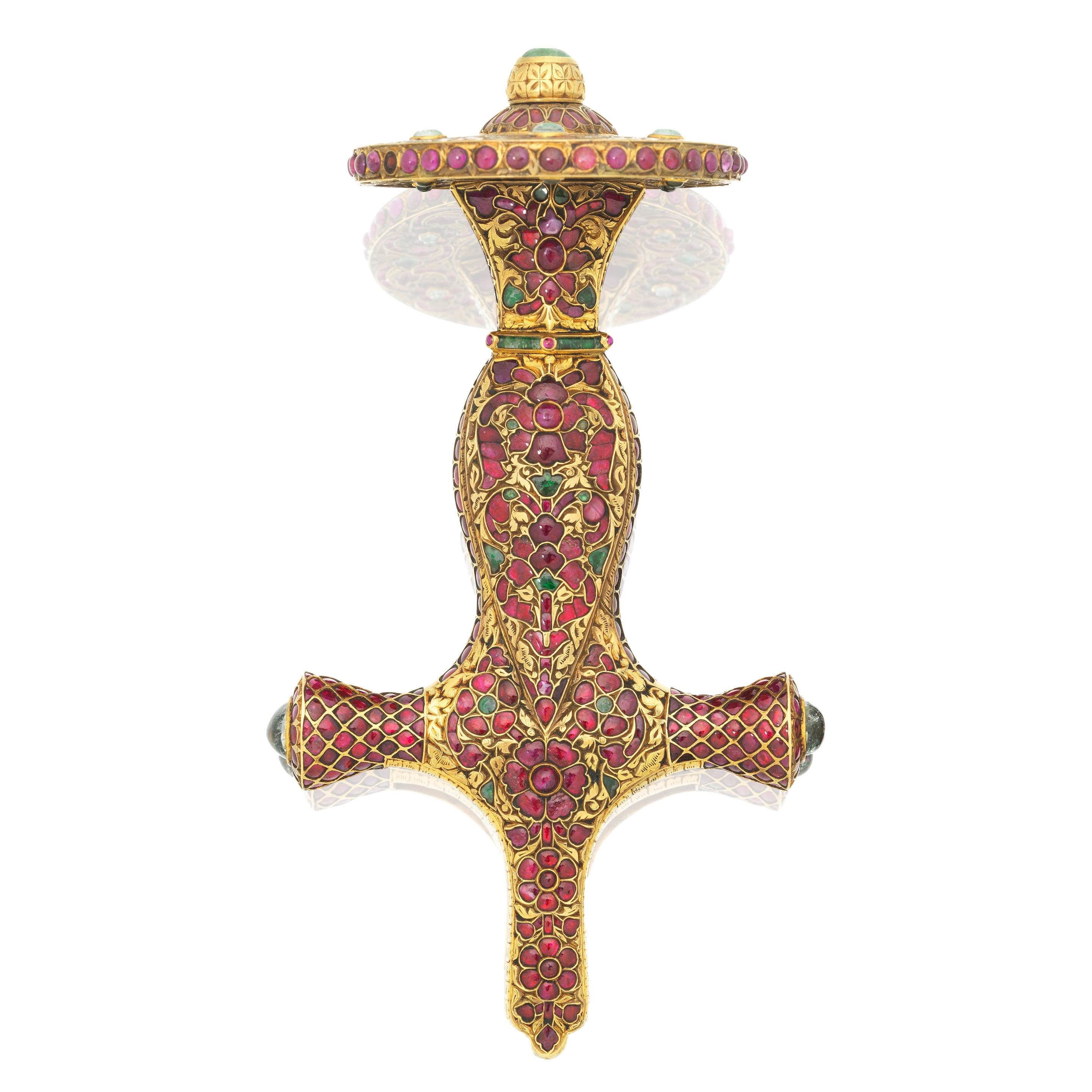
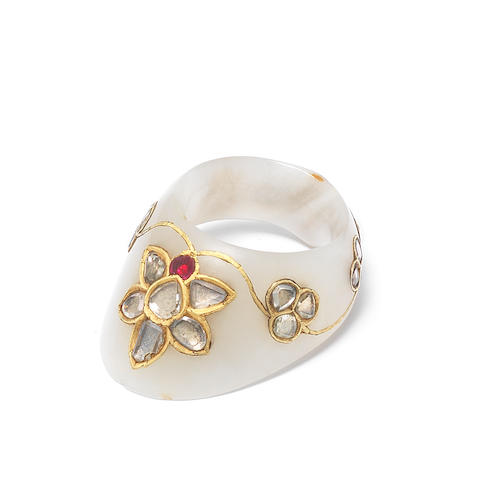
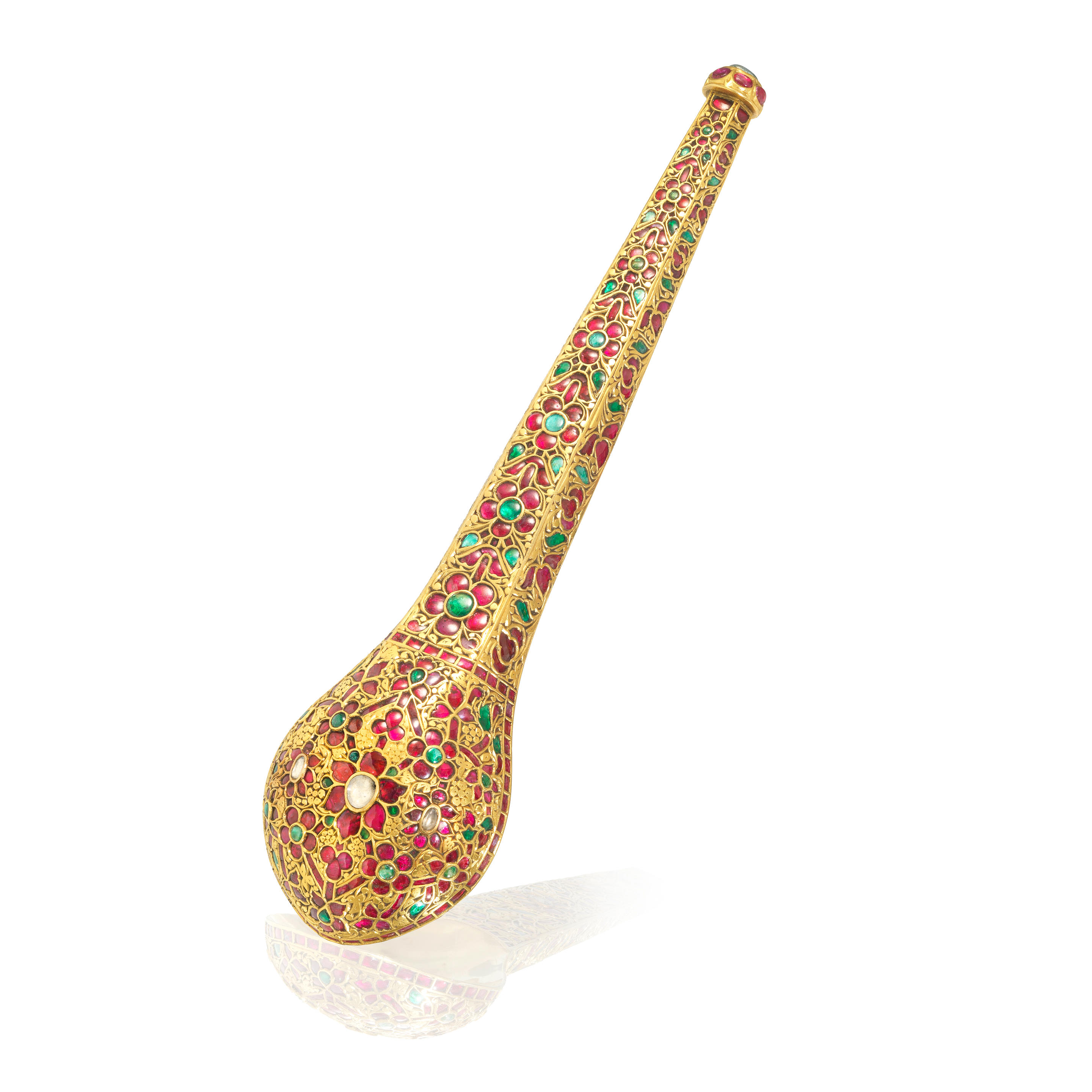





Try LotSearch and its premium features for 7 days - without any costs!
Be notified automatically about new items in upcoming auctions.
Create an alert